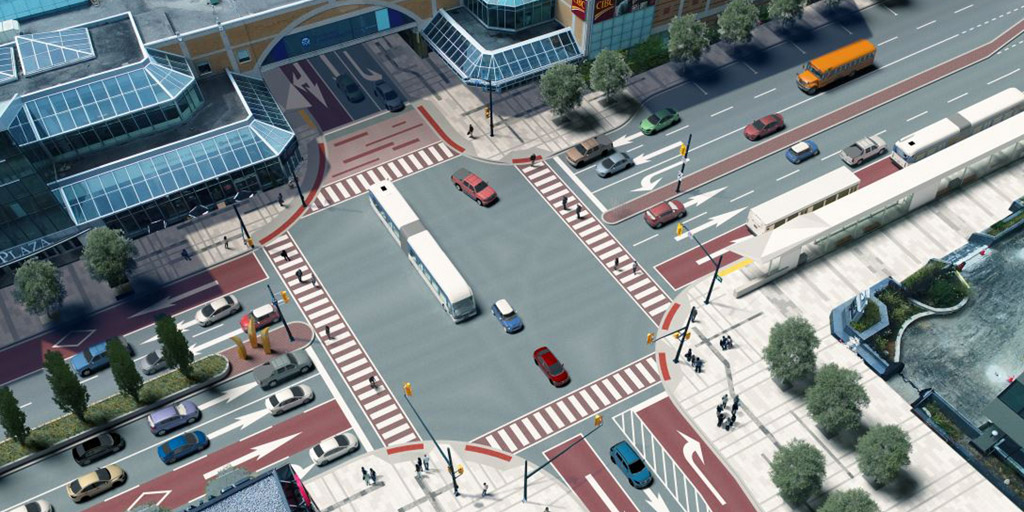Recommended design concepts for London's BRT routes unveiled
 CREDIT: SHIFT RAPID TRANSIT/CITY OF LONDON
CREDIT: SHIFT RAPID TRANSIT/CITY OF LONDONA design concept image for the intersection of King Street and Wellington Street.
Recommended design concepts for London's Bus Rapid Transit (BRT) plan were recently unveiled to the public and the BRT team is seeking feedback on these concepts. The $560 million transit system will update London's road infrastructure with new designated bus lanes and stops to transport individuals in a swift manner.
After the Rapid Transit project team has collected the public's opinion, they will be presenting these concept designs to the London City Council on April 9 in the form of a Draft Environmental Project Report (EPR). The feedback will be collected via open house events that will take place around the city from Feb. 28 to March 3.
The open house on March 3 will take place at Fanshawe College in the H cafeteria from 3 p.m. to 6 p.m.
On Feb. 26, the project team hosted a media briefing regarding the design concepts. At the media briefing, an information package was distributed to journalists. The package examined the information collected from the public prior to the unveiling. In particular, the information addressed the primary concerns and suggestions. The package also included various street concept images and a recommended bus stop design to help individuals visualize how these areas will eventually look if the recommended concept design is chosen as the final draft.
A recommended concept design image for Oxford Street and the Oxford entrance to Fanshawe College was included in the package as well. The design proposes two centre-running bus lanes on Oxford Street as well as the creation of a turning circle near lot 10 on campus.
Jennie Ramsay, the project director for BRT at the City of London, explained that the BRT team is working with Fanshawe College on creating the future design for the Fanshawe College area when it comes to bus transportation. “I think we are trying to make sure we are [both] constantly communicating and working in parallel to make sure we can offer the best design for Fanshawe when we get out to that point of the corridor,” Ramsay said.
The package possessed multiple statistics relating to BRT system's future impact on the City of London. These statistics include:
� 35 per cent increase in transit service hours (less time waiting for a bus)
� 230,000 tonnes less greenhouse gas emissions
� 40 per cent of Londoners will have a BRT stop within walking distance from their place of residence in the city
� 60 per cent of Londoners will be able to walk to work as a result of new BRT stops and stations
When asked what benefits the new BRT system will offer to students, Ramsay said that the reliability factor is what students will probably be looking forward to the most in order to make it to class or an exam on time. “Having a system that operates in a dedicated lane and can [ensure] that reliable trip time [...]”
According to the information package, construction is scheduled to commence in either 2019 or 2020.














